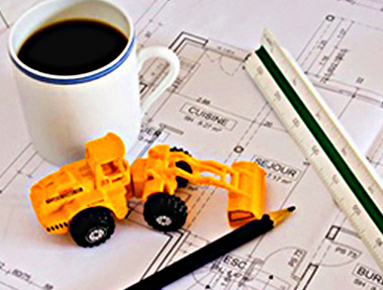Understanding Client Needs is about how Architects determine what is in the design of a project and how it is arranged.
 There have been entire books written about this subject. This is basic in the eyes of a highly experienced Architect, like Rand Soellner, ArCH, NCARB, LHI, Senior Staff Architect at HOME ARCHITECTS ®. Why: because Soellner said: “When Architects are trained at a major university, and during their apprenticeship, they are taught how to PROGRAM a Client’s project.”
There have been entire books written about this subject. This is basic in the eyes of a highly experienced Architect, like Rand Soellner, ArCH, NCARB, LHI, Senior Staff Architect at HOME ARCHITECTS ®. Why: because Soellner said: “When Architects are trained at a major university, and during their apprenticeship, they are taught how to PROGRAM a Client’s project.”
PROGRAMMING can be a simple, but very important project phase. This is where, at the beginning of a project, the Architect listens and asks the Client to tell them what they want. Sounds simple, and it is. However, if this step is skipped, there can and will be serious problems down the road.
So: Architects needs to start the project by listening and taking notes. The Architect must encourage the Client(s) to describe what they want:
Number of bedrooms & bathrooms.
Kitchen: large, medium or small (most want larger).
Living Room/Dining open plan concept.
Front Porch.
Entry Foyer with closet.
and so on.
Part of the programming also involves the Architect understanding the site parameters. He or she will research building setbacks from property lines, zoning, best view directions, topography ( slope of ground), best locations from vehicle maneuvering (an often over-looked issue by people who are not Architects), most economical locations for a garage and the main structure and other features (such as, but not limited to: septic field locations and setbacks, well locations and setbacks and more).
The Architect should ask questions and prompt the Client when the Architect believes that something may have been overlooked. For instance: a pantry. Or laundry, or closet, or Rear View Porch, or other items.
And, when the Architect believes that the Client has provided all the information that is important to the Client, then Architect needs to fill in the gaps with items known to be necessary. Like: backup space for vehicles in front of garages, mechanical equipment spaces, stairways, walls, materials, partitions, glass areas, solar protection/treatment and other items.
Then, the Architect needs to consolidate the Programming information into a simple itemized list of features (including and hopes and dreams of the Clients). This list is called:
The Program
Then the Architect needs to email this list to the client and ask them to review the program, make comments and return to the Architect, who then makes comments. This goes back and forth a few times, until the Architect feels comfortable that the Program is adequately complete.
See here for a webpage about programming from this firm: Programming.
Click here for a free download: the Client Centered Architectural Design Process . Which explains in detail not only the programming process, but also the entire architectural design process from start through finish, including construction.
Now then, once the Architect has the Client Needs Programmed, how to insure that those needs are properly implemented in the project? The above referenced book by this architectural firm explains, in detail, how they have dozens of intersecting points along the project process, where the Client’s input and review is desired and required to allow the Client to be part of the process. And guess what? Often a Client’s needs evolve and desires for other features arise. Therefore, it is essential that any responsible Architect provide the opportunities for their Clients to input the on-going project to make sure the Client will be happy and fulfilled with the results and most importantly, with the built project.
We have gone a bit beyond UNDERSTANDING Client Needs here and have gone into Satisfying those needs, with a methodology that effectively documents, then tracks the Client’s stated objectives.
And, early in this article, we mentioned that Not doing Programming can have consequences. Some unlicensed “designers” don’t understand programming and skip this all-important client-centered and site-centered step. Bad idea. They just start drawing. Based on what? Their “perceptions” of what they “think” the Client(s) might want? This approach is doomed. It will result in unhappy Clients and all sorts of missed information. For instance, without the property research in the Programming, a design could step on a building setback, which can have very serious consequences for the Client. For instance, the local building department could demand that the Client remove that portion of their house or other structure that has intruded into a setback area. Can you imagine that? 10 guys with chainsaws going to work on your new house, cutting off ten feet of your new living room?
Do it right: this is likely the largest investment of your lifetime. Have a real Architect design your house, based on a detailed Program.
For more information, please contact:
Rand@HomeArchitects.com www.HomeArchitects.com
tags: understanding client needs, cashiers, hendersonville, highlands, lake toxaway, glenville, atlanta, houston, sevierville, timber frame, post and beam, custom, lake tahoe

